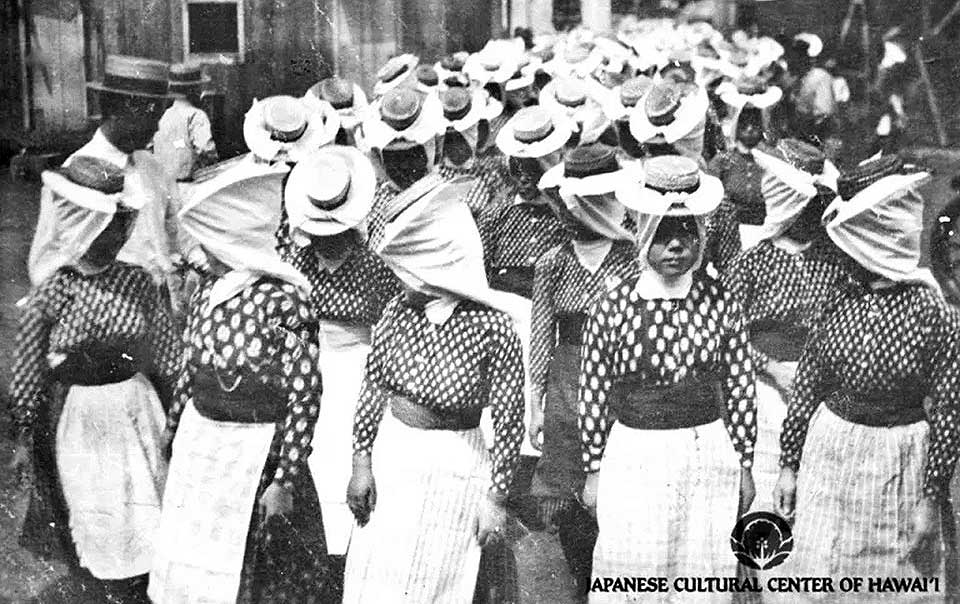
The convergence of state repression of people of color activism against white supremacy with radical internationalist, anti-colonial struggles constituted and justified the exponential expansion of the modern U.S. national security apparatus, argues a new book by historian Moon-Ho Jung. Menace to Empire offers this thesis, arguing that “the U.S. state melded the yellow peril and the red scare to contain waves of seditious subjects.” A similar thesis that emphasizes the domestic setting, its rampant anti-Black racism, and its connection to the Red Scare and the origin of repressive state governance can be found in Charisse Burden-Stelly’s Black Scare/ Red Scare.
Jung extends the geographical scope of the historical scholarship on the U.S. intelligence and security infrastructure. He opens the narrative’s chronology in the 1890s, which saw the U.S. participate in its first global war to seize overseas colonial territories. The U.S. genocidal war against the Philippine independence movement between 1898 and roughly the beginning of World War I and its inter-imperialist rivalries with Japan were infused with racist paranoia. U.S. officials dreaded the deterioration of worldwide white supremacy, prompting their demand for the establishment and subsequent expansion of military intelligence and internal security apparatuses that matured as centralized behemoths.

Jung’s profound survey of assorted national security archives, his readings of multiple primary sources authored by participants, and the extensive scope of his secondary sources elicit a skillful, triangulated documentation of his findings. His first two chapters document the earliest stages of the modern U.S. national security state in the Philippines, especially as it pertained to the perceived need to repress that country’s aspirations for independence, to kill insurgents, and to imprison or deport radical, anarchistic, or seditious elements who threatened U.S. imperialist domination of that archipelago. Of the several critical anti-colonial leaders that Jung studies, the labor organizer Isabelo de los Reyes stands out. He had been a devotee of the independence movement under Spanish rule and had been deported to Spain in 1896. There, he was incarcerated with Spanish anarchists who had been empathetic to the Filipinos. After his release, he carried anarchistic ideas back to the Philippines in 1901. Upon his arrival, de los Reyes launched the Union of Democratic Workers and escalated pro-independence rhetoric. The U.S.-funded newspaper, Manila American, a project of U.S. military intelligence, hinted at the close collaboration between white racist vigilantism and the state repressive apparatus when it horrifically suggested, as Jung reports, that de los Reyes could be shipped to the U.S. where he might “supply the roast beef for a tree hanging.”
U.S. imperialism’s craving to subdue Philippine liberation combined dangerously with paranoia about radicals and dread of Japanese rivalry in the Pacific. This perpetually suspicious state of mind led to the creation in 1901 of the first overseas intelligence operation with a centralized information stream to Washington. Infused with racist ideological predispositions that molded its reading of the data it gathered, this intelligence operation saw the world principally in terms that defined any resistance to U.S. domination as a racial threat to white supremacy, American values, and U.S. institutions. The magnitude of the information stream—exaggerated, fabricated, or accurate—to Washington helped reconfigure Theodore Roosevelt’s proposed “war on anarchism,” a response to his predecessor’s assassination as a “global” war rather than a domestic one. That policy doubled down on nearly universally exclusive anti-Asian immigration laws, ordered the build-up of an enhanced border control agency, and new anti-sedition laws that criminalized speech and thought deemed out of compliance with “American values.”
Jung pursues these historical threads into the first decade of the 20th century as Japan grew as an imperialist power whose role in the Pacific seemed to threaten the U.S.’s own gathering strength there. Fears of Japanese influence in the Philippines independence movement justified additional resources to build the spy networks, expand repressive security forces, extend the life of the concentration camps that housed “insurgents,” and deepen the collaboration between state security agencies and civic organizations (such as the American Federation of Labor, which sent a labor organizer to try to establish loyal labor unions). In addition to deepening the “conflation” of Asian racial identities with political radicalism, U.S. military intelligence constructed an image of Japan as a deadly imperial rival and the migration of Japanese people to U.S. territories and states as “a racial act of war.” They also began to imagine Japanese influence in nearly any anti-colonial expression and organization.
In chapters three and four, Jung explores the invention and proliferation of two major international “conspiracies” that further legitimated, in the mind of U.S. officials, the expansion of the repressive state security infrastructure: the “Hindu conspiracy” and the “Japanese conspiracy.” The former involved several South Asian activists who had fled political repression in Pakistan, India, and Bangladesh for the U.S., searching for more opportunities to organize anti-British forces. One outcome of this transpacific migration and anti-colonial movement-building was the Ghadar movement, which U.S. operatives referred to as the “Hindu Conspiracy.” Ghadar was founded by Har Dayal, who, in the years leading up to the war, organized hundreds of South Asian residents to return to India with the ill-fated goal of overthrowing British rule, supposedly with the material backing of the German Empire. Dayal and Taraknath Das, also a U.S.-based anti-imperialist with no affiliation with Ghadar, quickly experienced the wrath of the combined efforts of the British intelligence and the U.S. security apparatus. Both bureaucracies collaborated to track, detain, and deport many perceived South Asian anti-imperialists. Jung shows how this campaign both deepened British-U.S. intelligence ties (especially along the lines of white supremacist solidarity) and intensified the internal demand for more aggressive repression and an enlarged “administrative state.”
The “Japanese Conspiracy” was almost entirely invented by U.S. intelligence officials, Euro-American sugar planters, and white-controlled newspapers during the massive 1920 sugar strike on the island of Oahu, Hawai’i. The strike, which Jung documents carefully, had gained initial momentum at the end of 1919 and was inspired in part by the recent U.S. mainland strike wave. Workers forged inter-ethnic cooperation among the Japanese and Filipino plantation workforce. (They were less successful in incorporating the much smaller numbers of Korean and Chinese migrants into the unions.) Workers’ demands for racial equality in wages, conditions of work, and housing were interpreted as threats not only to the power of bosses to control workplaces but also to the racial supremacy of the dominant Euro-American minority.

Sugar planters and U.S. government officials saw signs of Japanese government influence under every bed. Despite the Japanese government’s repeated denials of involvement, rumors spread like the fires the striking workers set in the cane fields to signal their determination to the bosses and strikebreakers. The hints and allegations used to spread the conspiracy theory usually rested on little more than the hopes and dreams of some workers rather than material reality. As Jung states, military intelligence operators had already become predisposed to believe that any workers’ protest represented the leading edge of an international threat to U.S. power in the Pacific. Despite the failure of the 1920 strike action, the inter-ethnic solidarity formed during the 1920 strike endured, forging the basis of class struggle on the islands for decades to come. (Gerald Horne’s book Fighting in Paradise covers more of the history after the 1920 events.)
The events in Hawai’i accompanied new intersections in transpacific anti-colonial struggles. In their communications with mainland intelligence officers and internal repressive agencies (like the Bureau of Investigation), officials began to learn more about the interactions between purported Asian radicals and Black activists. Sen Katayama and M.N. Roy were two conspicuous names that stood out in this massive information exchange. Katayama had led Japan’s first radical labor union movement and was forced to flee political repression. (Japanese security agencies used new techniques they had learned by studying their U.S. counterparts.) In the final decade of his life, Katayama lived in New York, interacting with socialists and communists there and in Moscow, influencing the Communist International’s anti-colonial policies. He was aided in this latter endeavor by M.N. Roy, an Indian radical whose transoceanic crossings had also radicalized him. He may be best known for his anti-colonial thesis during the second congress of the Comintern, in which he elevated the national liberation struggles on an equal par with the European socialist revolutions. Roy and Katayama soon traveled to Mexico to help found that country’s communist party. Jung states that “communist internationalism, shifted and shaped the course of the racial and anti-colonial politics to make radical imaginings of ‘a colored international’ [Hubert Harrison’s proposal] into an institutional, global possibility.”
In his closing chapters, Jung records some of the activities of Japanese-American communist labor organizer Karl Yoneda and the Filipino labor organizer-turned-writer Carlos Bulosan. Yoneda, an unemployed organizer, farmworker organizer, and subsequently a longshoreman worker, was essentially a fearless combatant on behalf of workers. His participation in numerous strike actions and street protests, along with his close affiliation with the International Labor Defense through his lifelong romantic partner Elaine Black, placed a police target on his back. Following the larger international patterns of successful political repression, local police units in Southern California, most infamously in L.A., established “Red Squads,” both to brutalize protesting workers and to infiltrate and inform on labor organizing and political activity. After Japan’s attack on Pearl Harbor drew the U.S. into the war, Yoneda temporarily deferred his life-long disgust with U.S. capitalism and, despite the FBI’s record of his communist affiliation, joined the U.S. military after a brief stay in the shameful concentration camps that housed 120,000 Japanese and Japanese Americans.
Menace to Empire delivers a thoroughly researched account of related, if geographically disparate, events across numerous locations in the countries of the Pacific and North America that shaped the birth of the repressive apparatuses that continue to operate in the U.S. and which it deploys systematically in the international arena. With his brilliant contribution, Jung also offers a general framework for understanding racial and class formation, whose international links, patterns, and contradictions are ignored at the peril of those who struggle for liberation. Many of the same ideological biases for defining some Asian countries as enemies and subservient countries as friends persist today. The racist foreign policy frameworks that drove U.S. operations and policies in the early twentieth century continue to shape today’s foreign and domestic conditions, as campaigners to #StopAsianHate attest. With this book, Jung upends the commonly held but false belief that race and class analysis can be understood if contained within local or national borders.
Menace to Empire: Anticolonial solidarities and the Transpacific Origins of the U.S. Security State
By Moon-Ho Jun
Berkeley: University of California Press, 2022
We hope you appreciated this article. At People’s World, we believe news and information should be free and accessible to all, but we need your help. Our journalism is free of corporate influence and paywalls because we are totally reader-supported. Only you, our readers and supporters, make this possible. If you enjoy reading People’s World and the stories we bring you, please support our work by donating or becoming a monthly sustainer today. Thank you!










